Carthage House (Inishowen)
Houses within 15km of this house
Displaying 21 houses.
Houses within 15km of Carthage House (Inishowen)
Displaying 21 houses.
| House name | Description | |
|---|---|---|
| Carrick (Moville) | Miss Sydney R. Reynolds was leasing this property from the Donegall estate at the time of Griffith’s Valuation, in the 1850s, when it was valued at £10 10s. A house is still extant at this site. | |
| Stranagappoge (Inishowen) | Robert Kilpatrick was leasing this property from the Alexander estate at the time of Griffith’s Valuation, in the 1850s, when it was valued at £10 10s. It is labelled Stranagapple Demesne on the 1st edition Ordnance Survey map of the 1830s but as Stranagappoge on the 25-inch edition of the early 20th century. The original buildings at the site seem to have been replaced. | |
| Tirnaleague House | In the 1860s, Samuel Rankin was leasing this property from the Lord Bishop of Derry’s estate at the time of Griffith’s Valuation, when it was valued at £15. It is sill extant, now surrounded by modern housing development. |
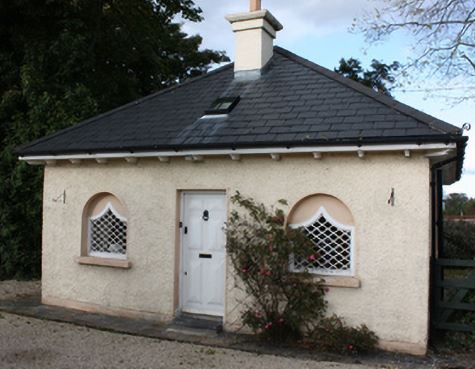
|
| Gulladoo House | Richard Anderson was leasing this property from the Dunbar estate at the time of Griffiths Valuation, in the 1850s, when it was valued at £21 and the adjacent mill was valued at £44. A modern building exists at the house site but the mill complex survives. | |
| Ballylawn (Inishowen) | This property was leased by Samuel Carmichael from George Dunbar's estate at the time of Griffith's Valuation in the 1850s, when it was valued at almost £8. Lewis had also recorded it as his residence in 1837. It is labelled Ballylawn on all editions of Ordnance Survey maps. It appears to be the site of farm buildings now. | |
| Carrownaff Lodge | Newspaper reports from the 1860s describe William Hazlett as of “Carrownaff Lodge”, Moville. This house appears on the 25-inch edition Ordnance Survey map of the early 20th century. The National Inventory of Architectural Heritage suggests a date of c.1860 for the construction of buildings at the site of Carrownaff Lodge, which is now demolished. | |
| Summer Hill (Inishowen) | A house labelled Summer Hill appears in Carrownaff townland on the 1st edition Ordnance Survey map. Reverend Stewart Marks occupied a house at Carrownaff at the time of Griffiths Valuation, which was valued at £11. | |
| Carrownaff Cottage | A house labelled Carrownaff Cottage appears in Carrownaff townland on the 25-inch edition Ordnance Survey Map. John Barr was leasing a property from the Hazlett estate at the time of Griffith’s Valuation, which was valued at £14. | |
| Malin Hall | John Harvey held this property in fee at the time of Griffith’s Valuation, when it was valued at £25. The National Inventory of Architectural Heritage suggests that this house was built in the mid-18th century by George Harvey. It remained in the family for over two centuries. In 1837 Lewis referred to it as the seat of J. Harvey, junior. In 1906 it was the property of George M. Harvey and valued at £25. Malin Hall is still extant and occupied. | |
| Rockville (Inishowen) | This property was leased by John Canning from the Harvey estate at the time of Griffith’s Valuation, when it was valued at £14. The site also included a flax mill valued at nearly £5. The National Inventory of Architectural Heritage suggests it was built c.1800 and served as a residence for the local Presbyterian minister at times during the 19th century. Rockville is still extant and occupied. | |
| Fairview (Inishowen) | John Harvey held this property in fee at the time of Griffith’s Valuation, when it was valued at £10. This property is marked as Fairview Demesne on the 1st edition Ordnance Survey map but the house is not named. Neither house nor demesne are named on the early 25-inch edition. It is no longer extant. | |
| Hollymount (Inishowen) | Henry St. George Layard held this property in fee at the time of Griffith’s Valuation in the 1860s, when it was valued at £12. The house does not appear on the 1st edition Ordnance Survey map but is labelled Hollymount on the 25-inch edition of the early 20th century. By the early 20th century this property was owned by John Scott and valued at over £21. The National Inventory of Architectural Heritage suggests the house was built c.1850. A house is still extant at this site. |
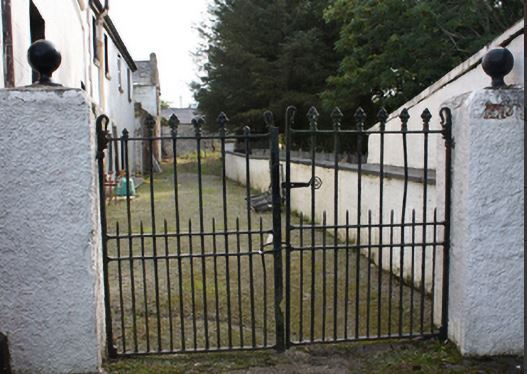
|
| Dromaville (Inishowen) | James McSheaffrey held this property in fee at the time of Griffith’s Valuation, when it was valued at almost £12. It is labelled Drumaville House on the 25-inch and later Ordnance Survey maps. Buildings are still extant at the site. | |
| Sea View (Inishowen) | Caldwell Motherwell and Thomas Black were leasing this property to Alexander Henderson at the time of Griffiths Valuation in the 1850s, when it was valued at £20. It is labelled Sea View on all editions of the Ordnance Survey maps but is no longer extant. | |
| Falmore House (Inishowen) | James Nicholson held this property in fee at the time of Griffith’s Valuation, when it was valued at £16. This house was built after the publication of the first OS Map. It is labelled as Falmore House on the 25-inch map of the early 20th century. The National Inventory of Architectural Heritage notes that a plaque on the house records its building by J. Steele Nicholson in 1850. It is now derelict. |
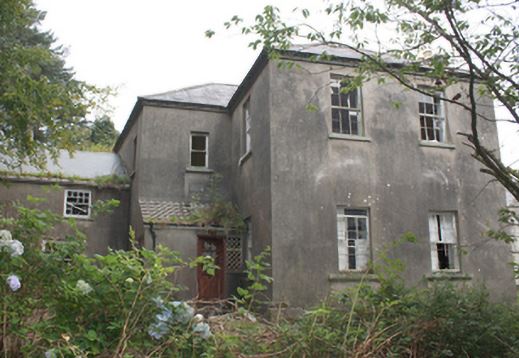
|
| Tirnaleague House | At the time of Griffiths Valuation n the 1850s, Samuel Rankin was leasing this property from the Lord Bishop of Derry’s estate when it was valued at £15. By 1906 it had the same valuation but was in the ownership of John C. McClintock. The National Inventory of Architectural Heritage suggests it was built by the Cary family but passed to the Rankins through marriage. It is still extant, surrounded by modern housing development. |
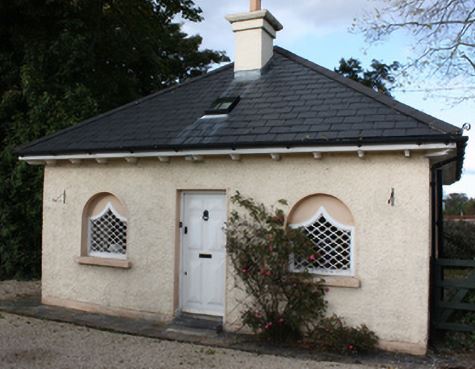
|
| Bridge Cottage (Inishowen) | Micah Cary Rankin was leasing this property to Mary Thompson at the time of Girffith’s Valuation, when it was valued at £10. This property was built after the publication of the 1st edition Ordnance Survey map and is labelled Bridge Cottage on subsequent maps. The local Carndonagh Heritage Society has a record of a diary (held at PRONI) kept by John Norris Thompson recounting repairs to the house in the mid-1850s. Buildings are still extant at the site. | |
| Culdaff House | Culdaff House was held in fee by George Young at the time of Griffith’s Valuation, in the 1850s, when it was valued at £28. Lewis also records it as the seat of the Young family in 1837, noting "the extensive and highly improved demesne". The National Inventory of Architectural Heritage suggests it was originally built in the later 18th century, possibly replacing an earlier house. In 1906 it was the property of R.G. Young and valued at almost £32. It was destroyed by fire in 1922, rebuilt and later remodelled in the mid-20th century. It is still extant and occupied. |
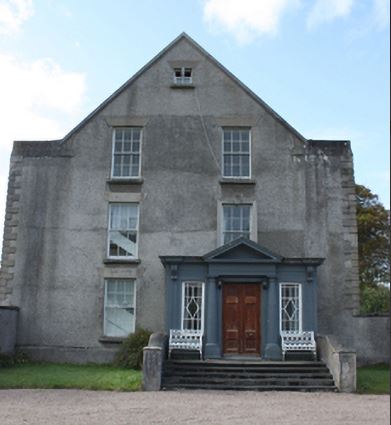
|
| Clare Mount (Inishowen) | William Holton was leasing the house at Clare from the Young estate at the time of Griffiths Valuation in the 1850s, when it was valued at £10. The National Inventory of Architectural Heritage suggests the current house was built c.1870 but on the site of an earlier building. | |
| Rosebank (Inishowen) | At the time of Griffiths Valuation in the 1850s, John Irvine was leasing this property from Reverend Samuel Montgomery's estate when it was valued at £12. In 1906 it was the property of Reverend H.H. Montgomery and valued at £44. It is still extant. |
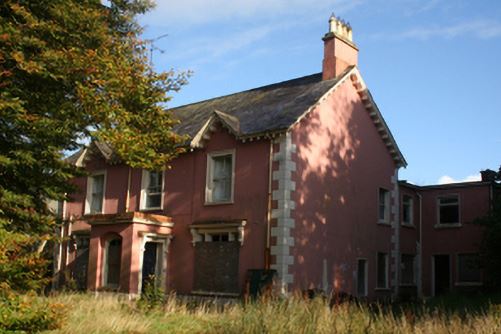
|
| Castlecary | Castlecary had formerly been the seat of the Cary family in Inishowen. By the time of Griffiths Valuation in the 1850s it was no longer their residence. It was occupied by Robert Lee, leasing from the Ferguson estate and valued at £1. It is no longer extant. |

